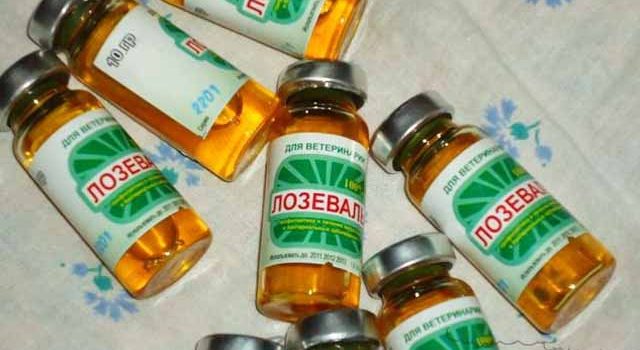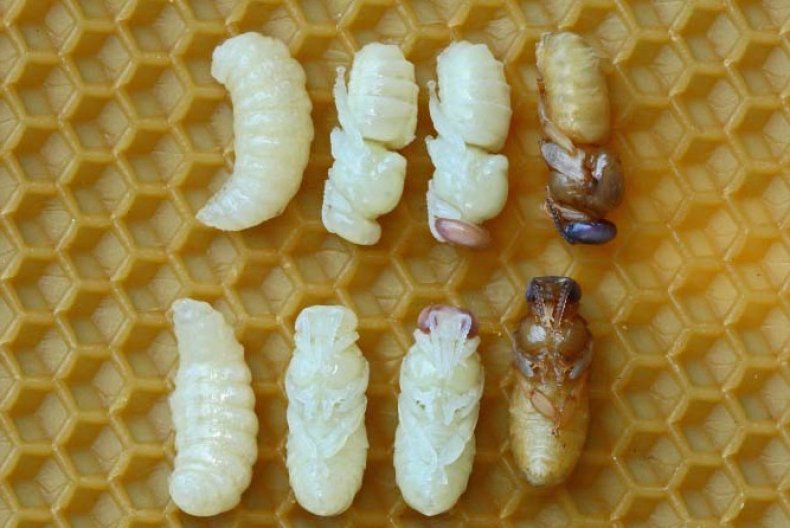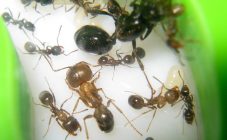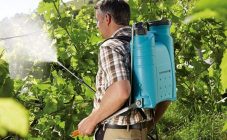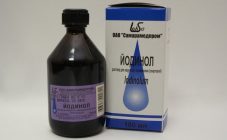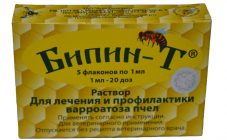Content:
Lozeval is used to treat viral diseases of bees, as a result of which insect larvae die en masse. To obtain high-quality honey, the health of the bee colony should be monitored. Before using the lozeval, the instructions for use for bees should be carefully studied.
What is Lozeval
Lozeval is actively used for the prevention and treatment of viral ailments of insects and birds. The active components of the drug have anti-inflammatory and immunostimulating effects on the organism of striped insects.
With the help of a lozeval, you can cope with:
- paratyphoid and colibacillosis, bacterial ailments, as a result of which bees begin to suffer from diarrhea and other symptoms that indicate the onset of the disease;
- filamentvirosis - a viral disease that affects the bee colony after flying, when the striped workers suddenly become apathetic and stop flying;
- suppurations due to pathogenic flora that affects the brood;
- acute paralysis, manifested against the background of the lack of proper conditions for keeping, because of which a bee colony can die en masse;
- saccular brood - a viral disease that affects bee larvae.
As soon as the owner notes the appearance of symptoms of one or another ailment, you should immediately use the dowser, which will allow you to restore the health of the bees and improve their condition in a short period of time. The immunostimulating effect of the drug helps to increase the efficiency of striped insects.
Mechanism of action
Lozeval for bees is produced in the form of a yellowish liquid that can withstand temperature extremes in the range of 50 ° C or -10 ° C.
Lozeval can be used for introduction into the interior of the hive or for processing a bee colony. The active components of the product easily penetrate the mucous membrane and skin. At the moment the active ingredient enters the cells of the bee, viral reproduction begins to block.
Instructions for use
During the treatment of viral ailments, the combs and walls of the hives in which the bee colony lives should be sprayed.
To prepare the solution, you will need to add boiled water 23-25 ° C to the lozeval. It is very important to adhere to the recommended proportion (1:50). To obtain 4 liters of solution, 80 ml of the drug will be required. For the treatment of every 10 cells, 100 ml of solution is spent. Lozeval should be applied 3 times with a break of 2 days between sprays.
In cases where the disease overtook the bees in the cold season, and spraying is unacceptable, you can feed the bees with medication, not forgetting to add sugar syrup to the composition first. For 2 liters of syrup, you need to add 10 ml of lozeval. Therapeutic feeding is carried out 3 times. The break between this should be 5 days.
For prophylaxis, the medication should be used in the spring, when the bee flight ends.If necessary, you can give bees to drink an immunostimulating agent in summer or autumn.
special instructions
During treatment with lozeval, it is important to follow the recommendations given by specialists, namely:
- avoid contact with the drug in the event of an individual intolerance to one of the components of the drug;
- do not eat or smoke cigarettes during prophylactic or therapeutic treatments with the drug;
- avoid getting the lozeval in the eyes or on the skin (if this happens, you need to rinse the skin or eyes with plenty of clean water);
- after each treatment of the hive and bee colonies, it is important to thoroughly wash your face and hands.
Treatment of honeycomb brood bees
A scaly brood is an infectious disease of printed broods, prepupae. Due to the content of the virus in the body, adult larvae begin to die en masse. The larvae that died are located throughout the space of the combs and lie even among healthy individuals. The lids of the printed brood cells appear sunken with a pair of holes. In some cases, the cells are completely removed by adult bees. In the inner part of the cell, there are dead larvae that lie on their backs. A sick larva already at the beginning of the disease differs from healthy ones. She becomes:
- matte;
- flabby;
- watery.
The scent does not come from diseased larvae. Its tips gradually darken, and the larva begins to dry out, turning from brown to black.
As soon as saccular bee brood is found, treatment should begin immediately. To treat a family of bees that suffer from saccular brood, you need to dissolve 5-6 ml of the solution in warm water (320 ml). Spraying each hive is recommended in stages. After the first stage, a break is taken for 2 days, a new treatment, again a 2-day break and repeated spraying.
If, for some reason, reprocessing was missed, the procedure is repeated as soon as the opportunity presents itself. In this case, the dosage remains the same.
Baggy brood in bees is a dangerous disease that requires immediate treatment. In some cases, rivanol for bees can be used instead of a lozeval. The therapeutic effect of the drug is similar to Lozeval.
Bee paralysis: signs and treatment
If you look closely at the bee family, you can clearly recognize the disease. The main symptoms of paralysis include:
- the aggressiveness of individuals on the arrival boards. Hostile bees rush at each other, checking whether this or that individual belongs to the family or is a stranger;
- pulling out black bees from hives by insects, while the latter begin to coward and die;
- a large percentage of death near the hives, and its number is constantly increasing;
- on each frame, black bees with a lack of chitinous coating are observed.
Lozeval can also be used to treat and prevent paralysis. Preventive treatment is recommended for:
- in the spring months, as soon as the first flight is completed;
- in the summer season at the beginning of honey collection;
- in the autumn months, when feed stocks begin to replenish after honey pumping.
For processing, it is recommended to use a mechanical sprayer like Rosinka. You can not only spray with a solution of the hive and bees, but also feed the drug to the bee family, after stirring it in sugar syrup (for every 5 liters of syrup, you will need 25 ml of Lozeval for bees). Each family will need 50 ml of sugar solution.
With the help of a lozeval, you can restore the health of bees in a short period of time, eliminate the virus in the hive, treat insects from such dangerous diseases as paralysis and saccular brood of bees. However, when using the drug, it is important to observe the recommended dosages so as not to cause even more harm to the bee colony. When working with a liquid, it is worth adhering to the rules of safety measures and excluding the drug getting into the eye area or on the skin! If an allergic reaction occurs, you should urgently seek help from a doctor.
